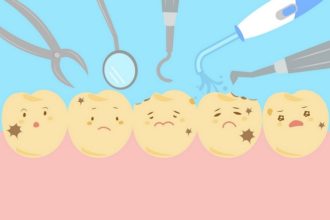4 Advanced Dental Procedures at the Dentistry

Beginning at approximately age 3, it is crucial that people attend a dentist twice yearly for dental cleanings, checkups, and fillings as required. Often, general dentists play a pivotal role in keeping your teeth healthy. Occasionally, a person needs to see specialists for dental issues that are more advanced, one of these being periodontal disease.
This condition, also known as gum disease, are infections of the gums that, if left untreated, can affect the roots and tissue of the teeth. There are many ways a periodontist can assist someone suffering from gum disease.
1. Preliminary Treatment

When a patient is referred to a periodontist from a general dentist, one of the first steps is to see how advanced the gum disease is and formulating a treatment plan based on this. The periodontist will examine the gums to determine if there is any recession or inflammation and measure the spaces between teeth and gums to access overall gum health.
Treatment usually consists of a deep cleaning of the affected areas called scaling and root planing. In this procedure, plaque and tartar are removed below the surface of the gum which reduces bleeding and inflammation. This in turn allows the gum to heal and the tooth to regain its structure.
2. Graft

Sometimes gum disease advances to the point where treatment may be futile and a more intrusive intervention is needed. A bone graft is the process of placing natural or artificial bone in an affected area to facilitate structural growth. The material used in the grafting is normally absorbed by the body and is eventually replaced with new bone. A gum graft is used when gums are recessed to the point where root sensitivity is an issue.
With this procedure, tissue is taken from another area and attached overtop of an exposed root. Instead of using existing tissue a periodontist can also choose to use proteins that encourage the body to produce tissue.
3. Implants

When treatment and grafts to assist in the fight against gum disease are deemed unsuitable by a periodontist, the next option would be dental implants. This option is reserved for patients who have already suffered tooth loss as a result of gum disease and consists of metal anchors being inserted into the gum in place of a root and capping it with an artificial tooth. These dental implants are manufactured to mimic real teeth and people who have them are able to eat, talk, and smile just like anyone with natural teeth.
Dental implants are an option that people do not want to have to think about because they are affiliated with the loss of natural teeth but they allow people to lead normal lives and most people cannot tell the difference between them and natural teeth.
4. Crown lengthening

Instead of solely adding to existing gums through the process of a gum graft, a periodontist may choose to add to the tooth instead to alleviate the prominence of gums due to tooth loss. This process is called crown lengthening and consists of exposing a greater amount of tooth structure so it is more visible above the gum line by adjusting the gum and the affected tooth.
Before this procedure, a periodontist will assist the area and confirm that enough bone structure is available to hold the new piece of crown in place. Crown lengthening can be completed in one appointment with local anesthetic, reducing discomfort and allowing you to complete your day afterwards without issue. Not only will crown lengthening repair the damage done by gum disease, it can lead to a healthier, more symmetrical smile.


